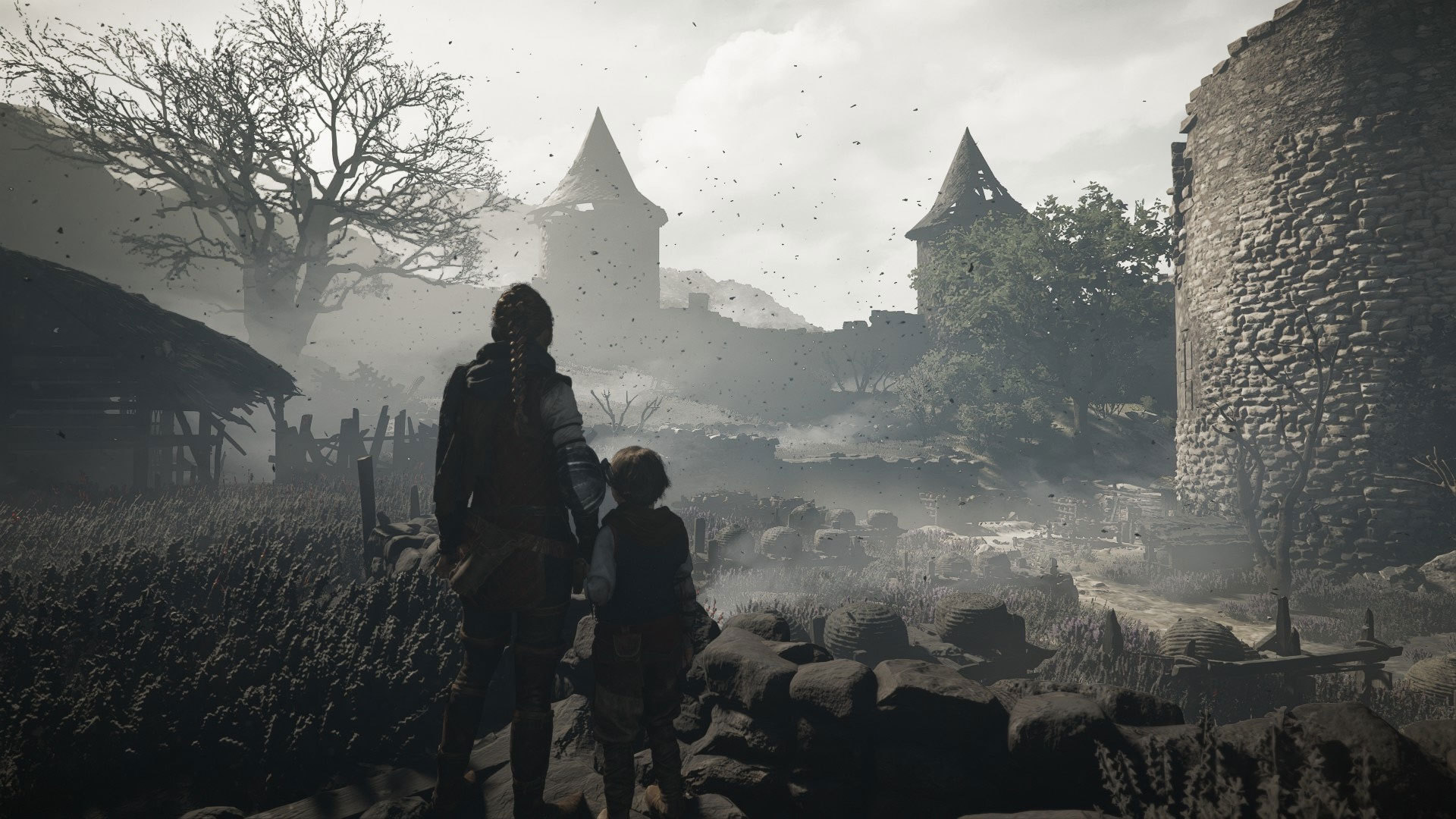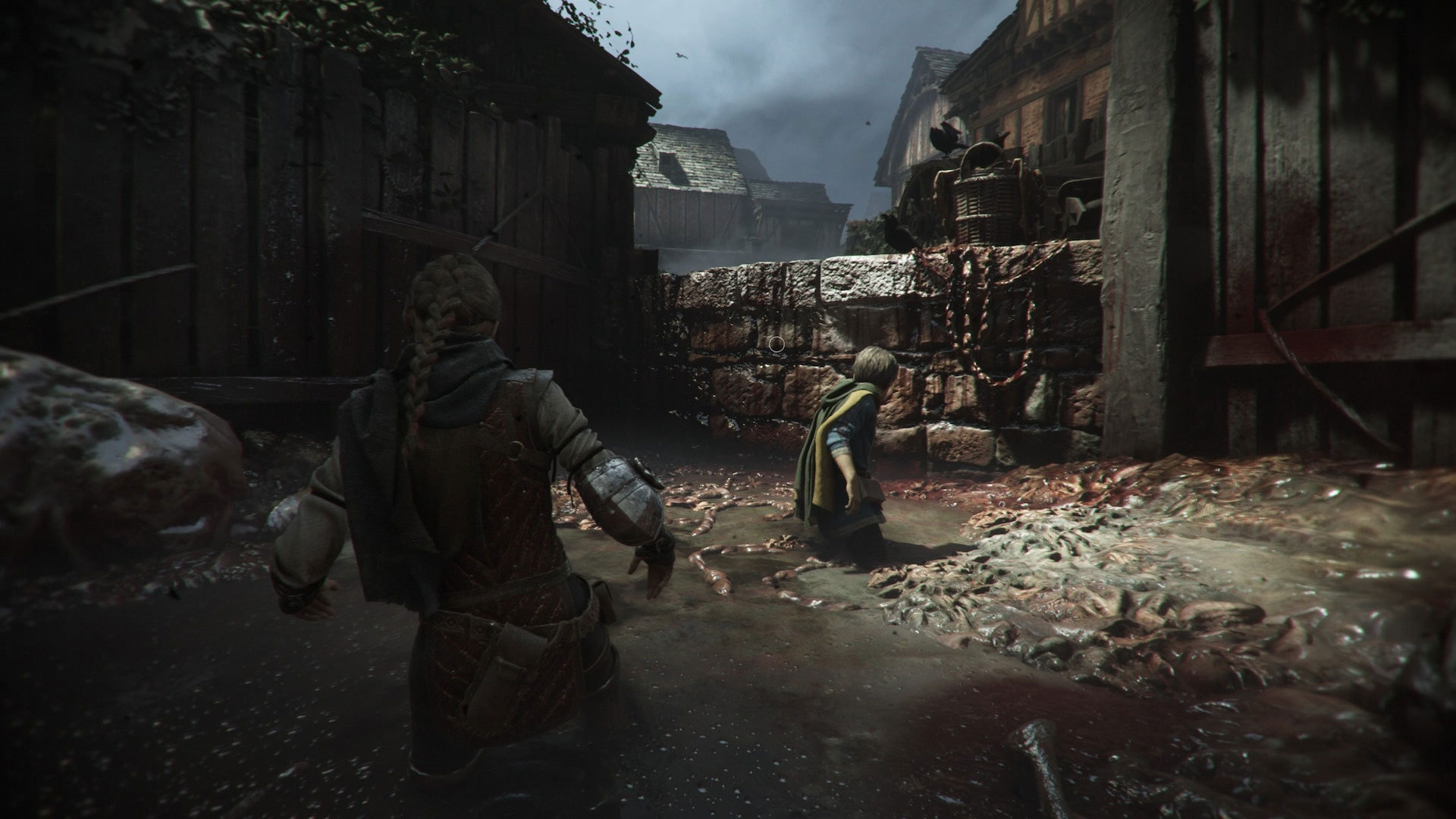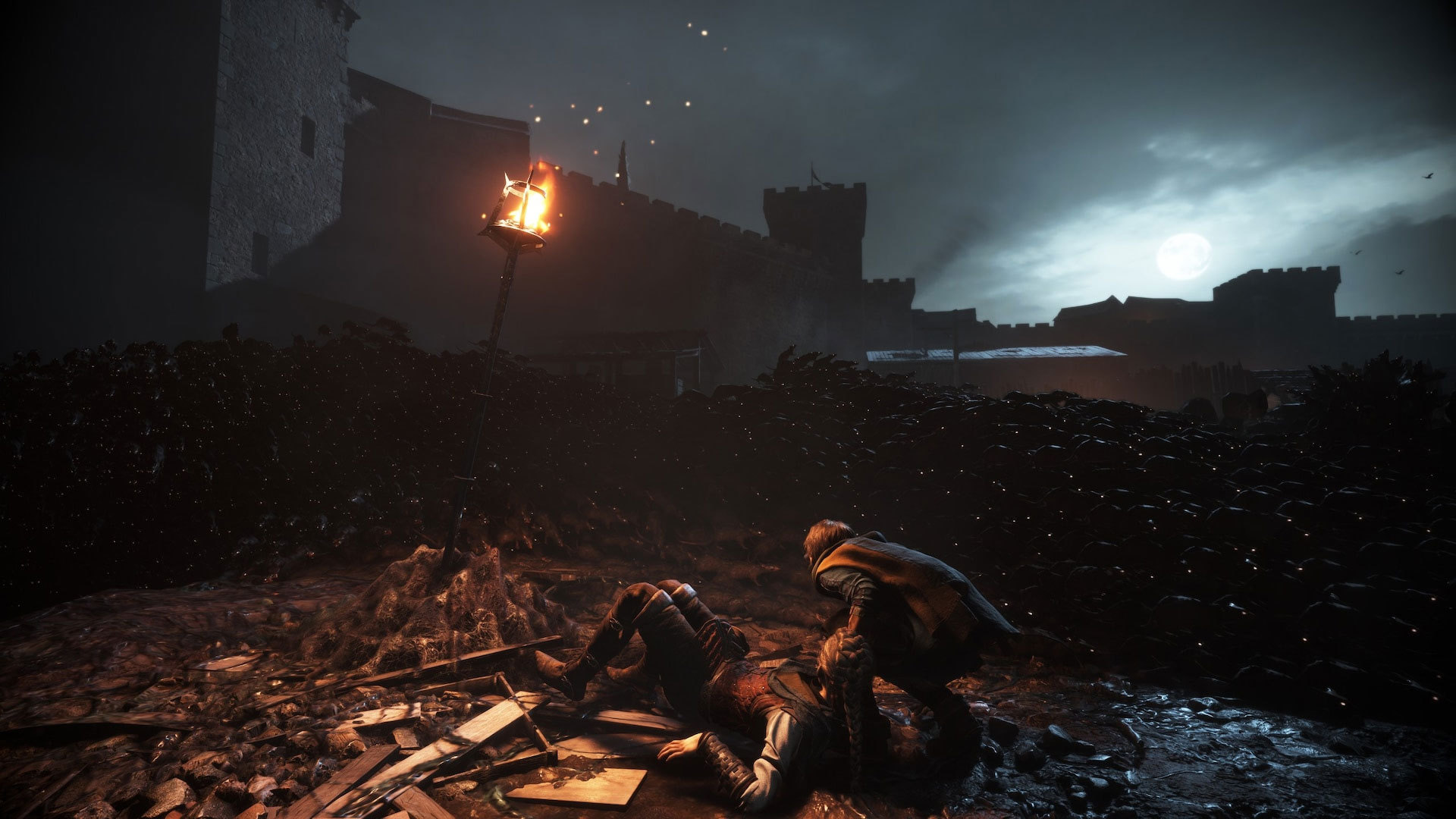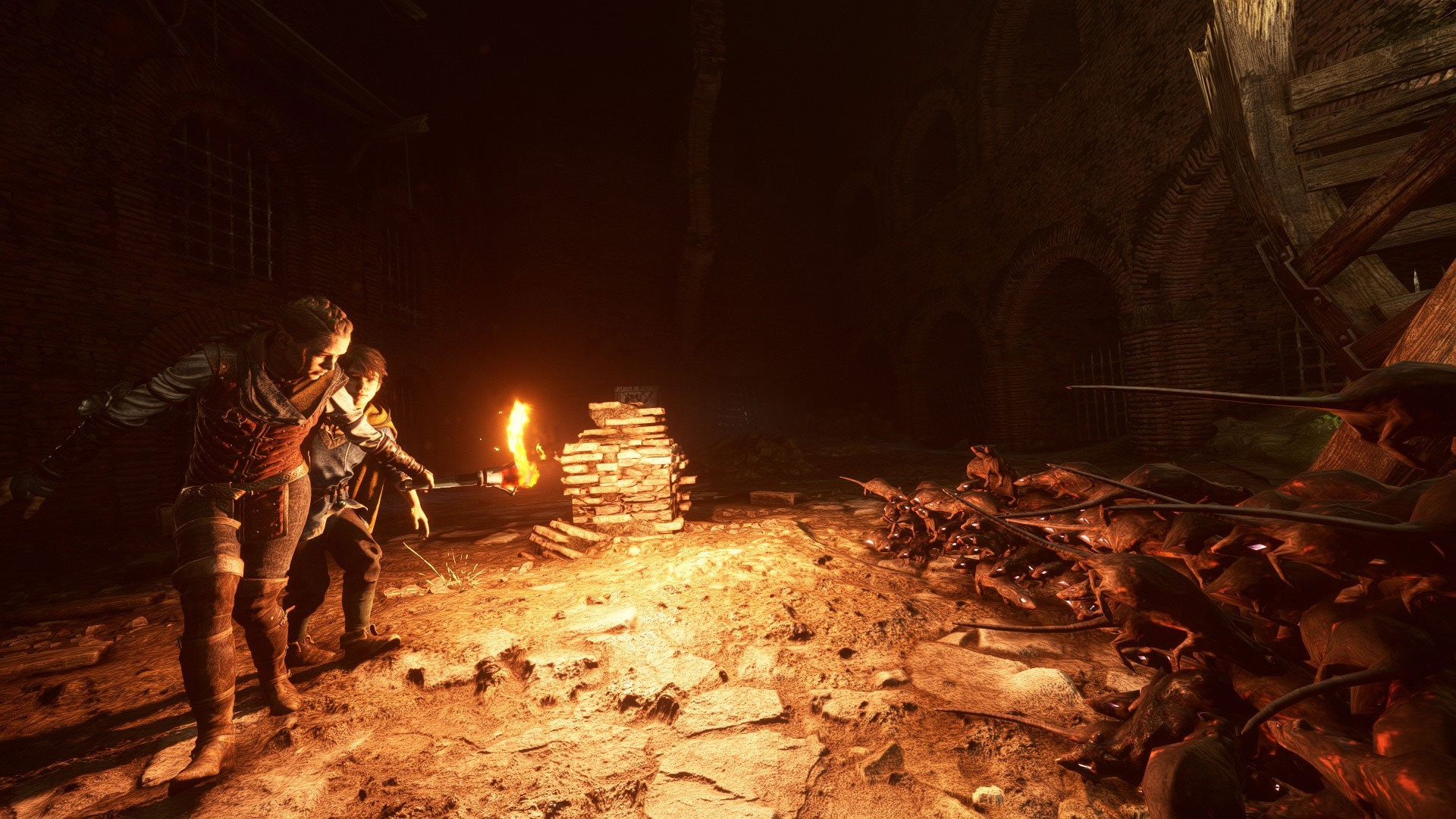A Plague Tale: Requiem Review
PC
A Plague Tale: Requiem, simply said, a well-crafted masterpiece and contains all the features one would expect from a sequel.
Reviewed by Rayan on Oct 24, 2022
Hordes of rats, in which two youngsters found themselves trapped, were a distinguishing feature of the game that originated in France in the 14th century. Three years after A Plague Tale: Innocence, Asobo Studios continues the savage quest for survival with these two youngsters, Amicia and Hugo.
Like the original, the game takes place in the same world as its predecessor, and from its appearances, A Plague Tale: Requiem has sought to establish itself as a more definitive sequel with a more complex storyline. Its goal was to seem like a traditional sequel that stays true to the original yet improves upon it in significant ways. Even with some technical flaws, Requiem brings a story worthy of being remembered for a very long time.

A Plague Tale: Innocence ended with Amicia, Hugo, and the others nearest to them looking for a new place to call home. It was supposed that Hugo's Macula illness, which gives him superhuman power with rats, had subsided. When the curse reappears, they attempt to find a solution to alleviate its effects on him. Not everything can be planned for; therefore, the siblings must sometimes go on, and that's how the story takes on.
Some story elements are also reworked, although the setting remains in France in the 1300s. Nevertheless, the most compelling aspect of Requiem is the inherent ideas that run throughout it. As you move through the campaign, themes of brotherly love, hopelessness in the face of a harsh world, and the difficulty of facing up to one's own acts are interlaced and supported by characters you grow to care about.
We take on the role of Amicia once again in A Plague Tale: Requiem, and this time, we're helping her take care of her brother, Hugo. One year has passed after the conclusion of the events that took place in Innocence when the events of the two begin.
The world has recovered from the rat infestation, and the main protagonists are now making their way to an old order of alchemists that Hugo is tasked with curing. Hugo is the one who carries the Prima Macul, a vicious energy that has the potential to destroy the Earth by infesting it with a rat plague.

Even though the crisis from the first half seems to have been resolved, with the Inquisition giving up the chase, the difficulties he encounters along the journey and the hostile populace rapidly remind him of the challenging legacy he left behind. Once again, we are forced to evacuate because the plague has returned, and rats are overrunning the towns.
Alterations have also been made to the manner in which Hugo's growth occurs. During his first appearance, Hugo did not impress much. Though I had some sympathy for his illness, his constant need for care grew old after a time. In A Plague Tale: Requiem, however, the maturation of Hugo's rat talents has resulted in the development of some new skills for him.
For instance, as he progresses through the game, he obtains a new talent that gives him the power to detect the blood flow in the veins of adjacent enemies and to exercise his control over a swarm of rats.
This gives the power to see things as the rats do and to steer the light in such a manner that it may be used to destroy enemies who are out of sight. However, his power, like every other ability, has its limits. We can't keep relying on this ability; using it increases a bar, and when it reaches its maximum, the area is overrun with rats, making it harder to get through the level.

The twins will go on a journey that takes them from the beach to the large city, through the dense storm, and under the scorching sun. A Plague Tale: Requiem has more open surroundings than other narrative adventures, but the player is continually steered around the world, whether by a group of onlookers or a cart blocking a street.
The twins are lucky to have three followers—Lucas, Arnaud, and Sophia—to support them in their race against time. Amicia may use the order system to call upon the skills of her new recruits. While the knight fights highly armed enemies, the youthful alchemist builds the wood flames stronger than before.
On the other hand, the pirate makes a glowing halo with her prism or lights twigs on fire to draw attention from guards (repelling rats). The roughly 17-hour-long journey they will take together will contrast dark, nihilistic sections with brighter ones, the latter serving primarily to deepen the relationships between the heroes. A tried-and-true method that has earned praise before but which has been perfected even further in this work.
Much like its predecessor, the game delivers intellectual gameplay of the two characters necessary for advancing through the many locations. Amicia is also more skilled than ever with her slingshot. Although stealth is usually the best course of action in A Plague Tale: Requiem, there are moments when direct violence is necessary.
In addition, the deaths that occur in A Plague Tale: Requiem are never gratuitous, which is one of the factors that contributes to the game's realism in terms of its pragmatic standpoint on the journey of survival. She has a number of choices open to her, whether she wants to kill or live.

To make substantial advancements in the quality of our tools, we consistently gather in the workshops after reaching certain points of the story. This approach incorporates Prudential, Aggressive, and Opportunistic behaviors, which are the three different avenues of development. Each allows you to advance closer to direct combat or complete stealth. Amicia's aggression, for instance, is so potent that she can force an adversary to the ground right in the center of a nest of rats.
As long as you have the necessary raw materials, which you can acquire in chests or gather from the surroundings, you can make the essential items of your choice. Their versatility and adaptability make them ideal for usage in various contexts.
They also form the basis of some of A Plague Tale: Requiem's most engaging puzzle sequences when paired with other items and the environment. For instance, if you have access to a crossbow, you can use it to launch fire arrows, which, once embedded in the wood, can serve as a constant source of light as long as you don't remove them.
Other than that, the crossbow is best used against enemies with armor, but arrows are few, and you must make do with what you find when you can. Typical guards can be dispatched with nothing more than a slingshot and some stones, of which you have plenty.
On the other hand, if the soldier is already wearing a helmet, your blow will likely just temporarily shock him. If you strike a full bag near several gunmen with shields, the dust in the bag will fly up and blind them, making them easy targets.

This is the primary method of killing enemies in A Plague Tale: Requiem, albeit you may also escape or react just before you die. Dinner difficulty options may make enemies more hostile or reduce your margin for error when you make errors, but your actions and your capacity to work together won't be affected in any way.
It's not hard to outsmart the somewhat simple AI powering the dogged pursuers, and after a few hours, you'll know how to take advantage of a number of the most obvious vulnerabilities.
Again, you'll have to resort to simple techniques to escape undetected in A Plague Tale: Requiem, partly because the game's alert levels deplete reasonably fast. It works out well during the parts of the game that contain environmental puzzles, such as those in which you have to navigate through formless hordes of mice scrambling about in the dark.
Environment-based puzzles appear rather often during the gameplay of A Plague Tale: Requiem. Most of these tasks will require turning a crank, pushing a cart, or having Hugo or a friend do these things for you while Amicia explores a new surrounding, which is typical. You'll need to use your wits to answer a few riddle-based puzzles, but you won't be left in the dark for long.
Environmental puzzles, which mostly require you to extinguish flames or start fires to remove obstacles and reveal key items, are likely the only thing new you'll encounter. There's a considerable bit of free roaming to be done in the game as well. There are long stretches when the next plot beat opens automatically, and all you have to do in the meanwhile is look at stuff, chat with people, or examine items.

The game takes advantage of this situation to impart background information or advance the story in a way that doesn't seem filler. In contrast to relegating these sections to a series of non-interactive cut scenes, they provide a welcome break from the game's more action-oriented components while still making you feel like you're playing.
When it's just you and the rats, the rats are still a part of the game's environmental puzzles, and they act pretty methodically, although one that can be changed and altered to some degree by cutting out light trails.
The level design, visually and in terms of gameplay, significantly contributes to A Plague Tale: Requiem's overall excellence. Everyone can get a good impression of them just by looking at them. Once again, environmental artists gave it their all to create settings that emit an overpowering and palpable mood.
The developers have skillfully planned the atmosphere by using colors and aspects of the environment that have been picked with great attention to detail. The shift from the idyllic scene of a festival in a typical medieval city to the filth and collapse of a neighborhood ravaged by the plague is seamless and virtually impossible to notice.
The gameplay ensures that the players are pushed to a carefully constructed onslaught of impulses designed to provoke a certain emotional response. At every turn, we come across new locations that either excite or repulse us, and these experiences are imprinted in our memories. You only need to pause the game every once in a while and use the built-in camera mode to take pictures of the beautiful scenery.
However, from moment to moment, there are incidents that will hamper this smooth experience. This may vary from being amusingly glitchy, like a swarm of rats floating in the air to escape your torch, or the next unlockable door not opening because you've reached it before your friend has finished pondering how to proceed.

Apart from these few glitches, however, not only does A Plague Tale: Requiem has an outstanding gameplay experience, but it also has excellent visuals and soundtracks. Each site has its unique layout, along with an overload of intricacies and incredible vistas, which may be either breathtaking or terrifying.
It is interesting to view people living in the Middle Ages going about their daily lives, such as fixing the roof, working in the garden, rearing animals, and selling their wares at the market. It is also intriguing to watch celebratory dances and festivities.
However, even with high textures, the game can be played well on a PC with a medium-powered system, but there may be occasions when the frame rate drops and the game becomes more sluggish. On the other hand, visual distortions could appear every once in a while but restarting the game fixes the issue.
Additionally, there are occasions in A Plague Tale: Requiem when you have the opportunity to gather other mementos and trophies for Hugo's collection, such as flowers, feathers, and other unique items.
The game's settings provide various choices for customizing visuals, audio, controls, and niche options like aim support and immortal mode. You can't be injured by other players after it's activated, but hazards like rats, fire, and traps are still there. You'll need roughly 20 hours to complete the tale before you can access New Game+.
A Plague Tale: Requiem, simply said, a well-crafted masterpiece. It improves upon the original in every way and contains all the features one would expect from a sequel. The game's varied mechanisms keep things interesting, and the excellent pace makes you feel like you got the right amount of each element at the right moments. The plot itself is engaging enough to overcome a few gameplay issues, providing a compelling sequel even though it may seem like a rehash of the original in many aspects.
Yet, there are enough unexpected turns in the story to keep players engaged. And that's not even considering the quality of stealth gameplay, which can be as harsh as it is scary and strikes the ideal mix between simplicity and challenge. The adventure that Hugo and Amicia are on is both inspiring and terrifying. If you haven't played A Plague Tale yet, now would be the time to experience both games and two stunning stories of love and survival.
Senior Editor, NoobFeed
Verdict
A Plague Tale: Requiem is a well-crafted masterpiece. It improves upon the original in every way and contains all the features one would expect from a sequel. If you haven't played the series yet, now would be the time to experience both games.
95
Related News
No Data.

